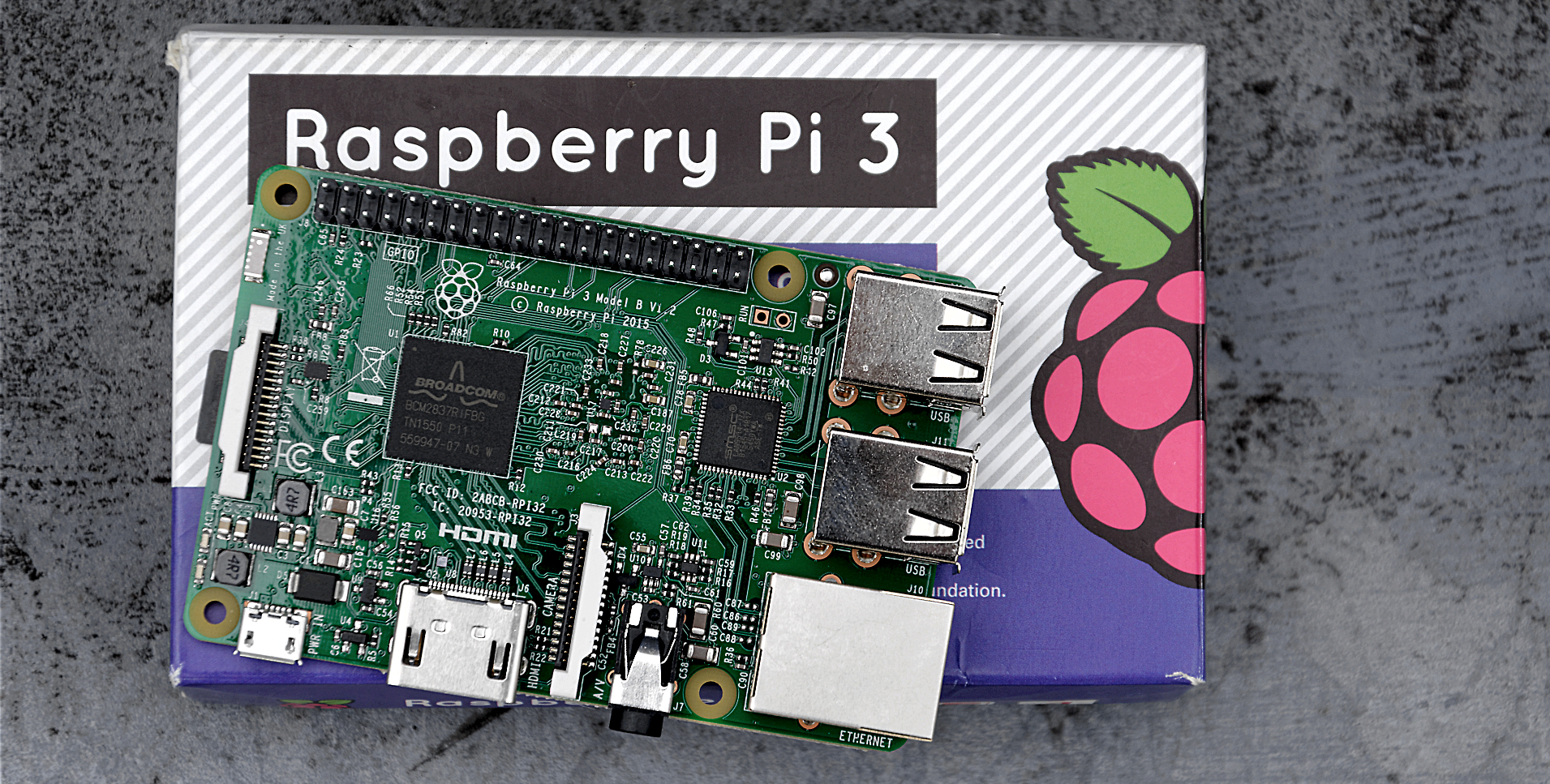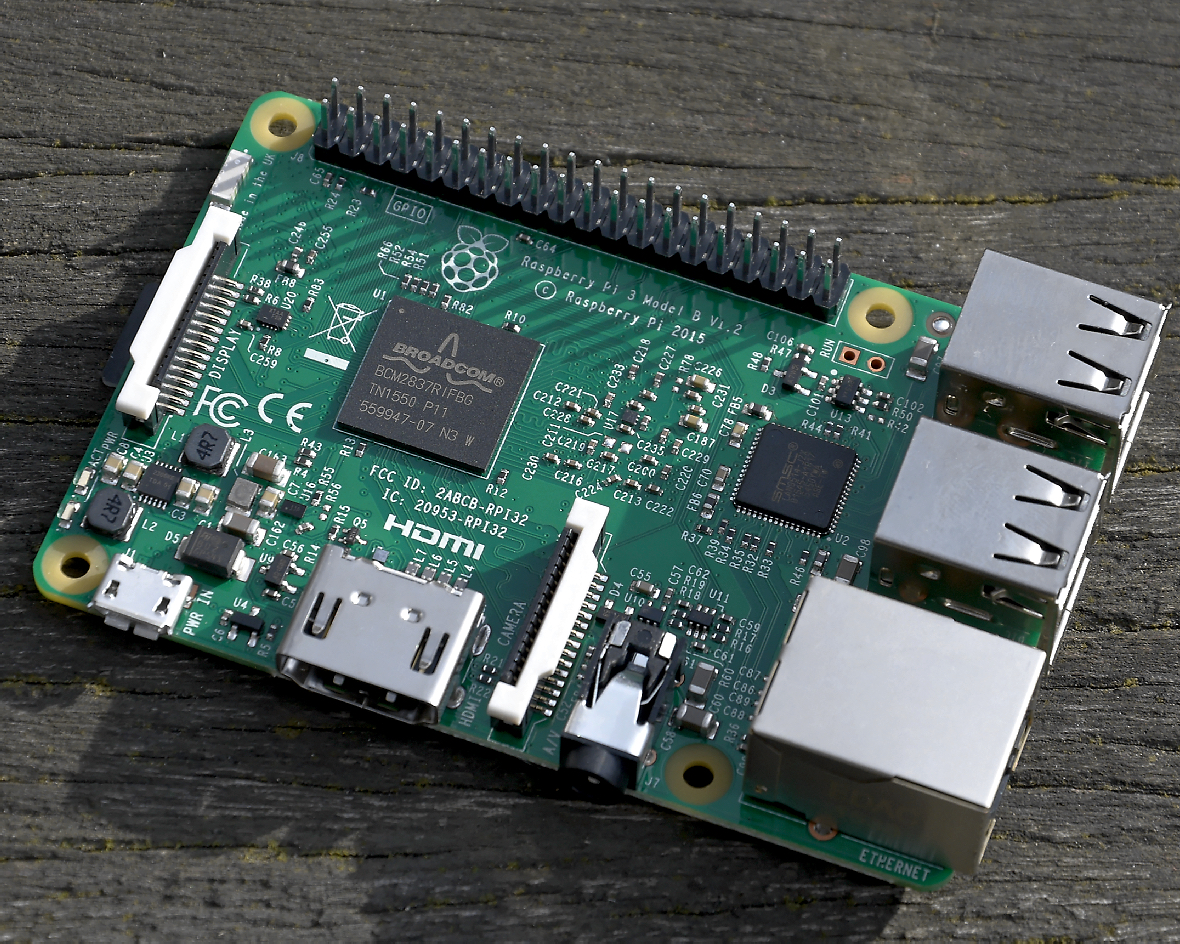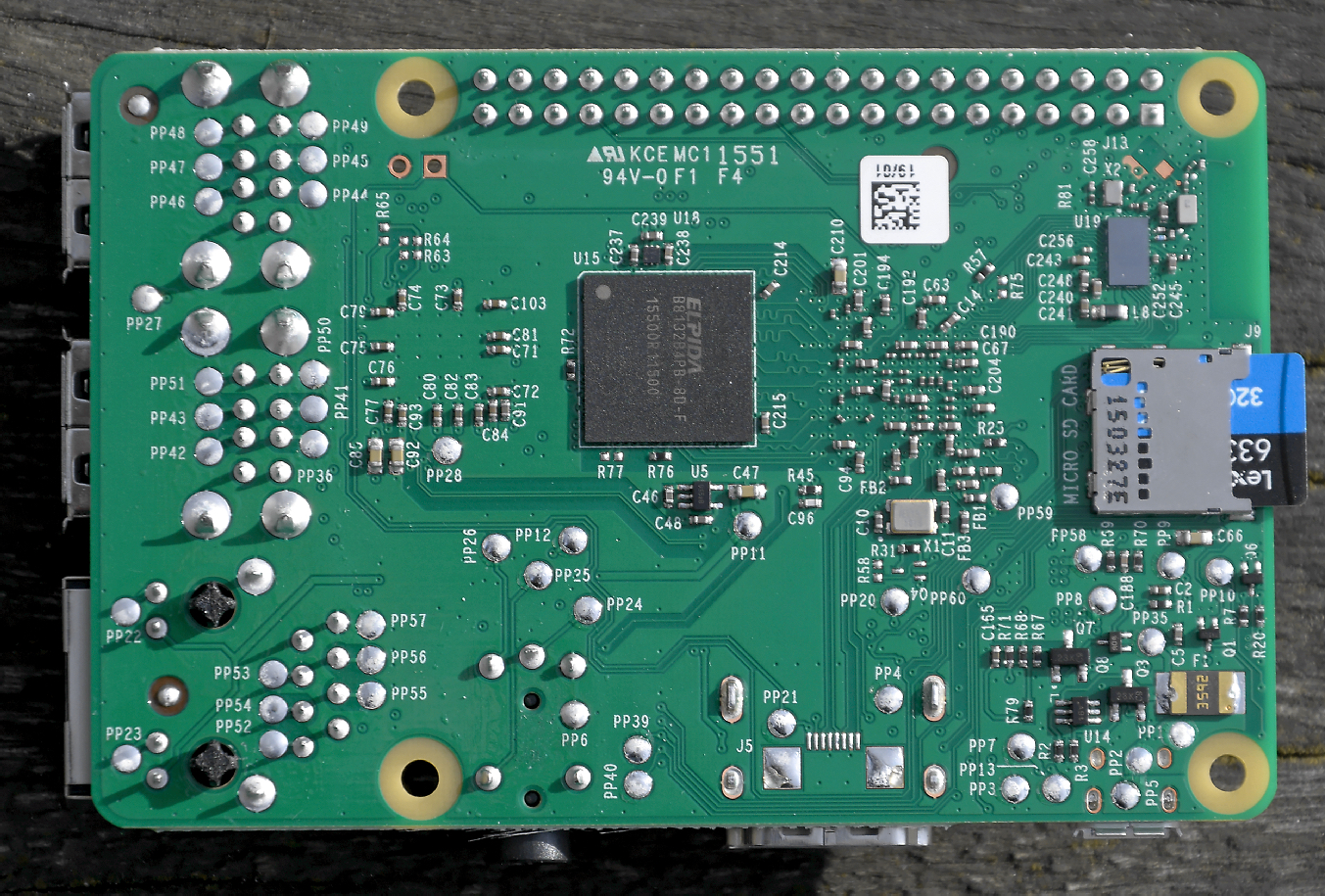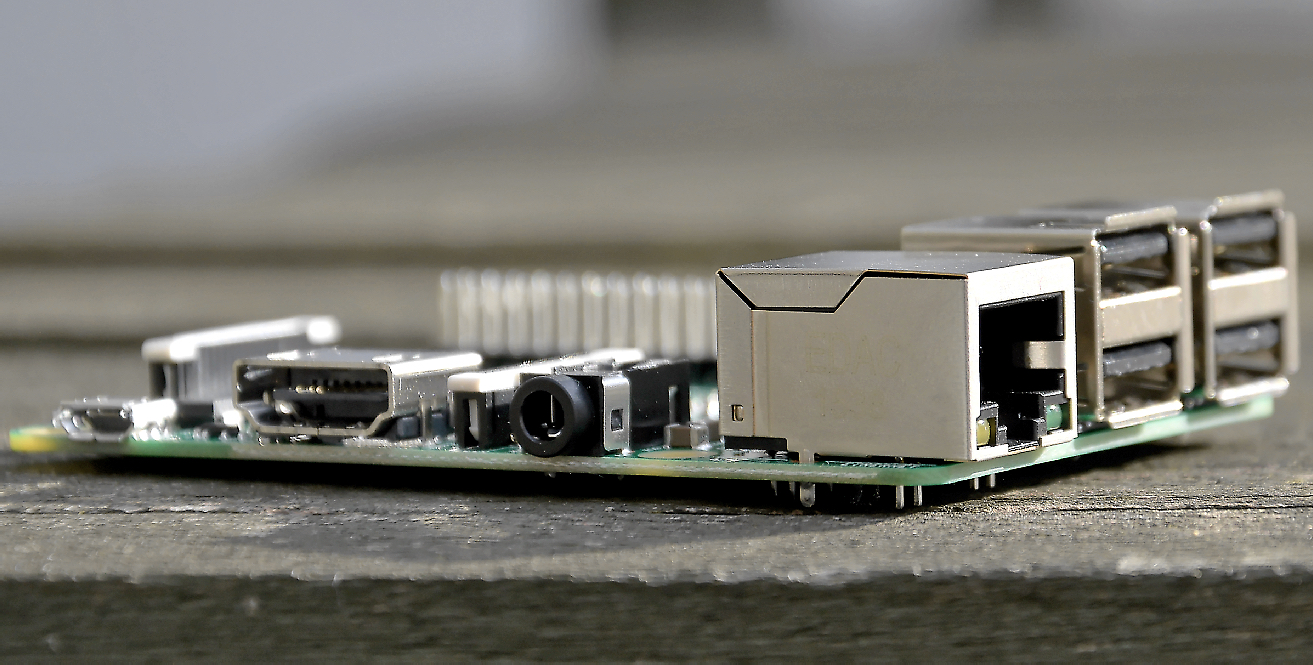Raspberry Pi 3 Model B review
The latest version of the compact computer adds more power and built-in wireless connectivity


Older Pis are still better for embedded systems and others projects where the lowest possible power consumption is paramount, but for other uses, especially as a Windows desktop PC replacement, the Pi 3 is a cracking upgrade
-
+
Integrated Wi-Fi and Bluetooth saves hassle and USB ports; Upgraded processor means smoother desktop performance; Cheap
-
-
Slightly more power hungry than older Pis

When the Raspberry Pi Foundation first launched its first single-board computer in 2012, the tech community was struck with confusion, intrigued by the organisation’s apparent capacity to achieve the impossible. Since then the organisation founded by Ebon Upton has gone from strength to strength, growing its own community and expanding its product line.
First launched in 2016, the Raspberry Pi 3 Model B is a clear upgrade on its predecessor, the Raspberry Pi 2, with the organisation packing key hardware upgrades into the micro-computer. This iteration benefits from a 64-bit quad-core ARMv8 processor, with its four Cortex-A53 cores clocked at 1.3Ghz.
8 Raspberry Pi projects to try in 2023 What is the Raspberry Pi Pico? Raspberry Pi 400 review: The ultimate portable Pi
This is alongside integrated 802.11n Wi-Fi and Bluetooth 4.1 functionality with Bluetooth Low Energy support. These connectivity features are among additions the community had requested for some time and means there's no longer any need to connect external adaptors. This frees up the Raspberry Pi 3 B’s USB ports for different peripherals.
Power efficiency's a big selling point, although this microcomputer consumes more than older editions, running off a 5v micro USB connection with a power draw of 2.5A. This meant that for those keen to keep power consumption as low as possible, they were advised instead to acquire Raspberry Pi Zero and Pi 1 A+ units.
While there were a handful of hardware improvements, its creators set out to design the Raspberry Pi 3 B to resemble previous editions as closely as possible. Beyond its aesthetic, this serves a functional purpose too, with continuity for previous cases and mountings. Any projects designed for previous iterations of the Raspberry Pi Model B would also work as normal if any hardware was to be replaced, given that its ports and connectors are also unchanged.
Like its predecessors, it has four USB2 ports, a full-sized HDMI port, a 10/100 Ethernet port, a combined 3.5mm audio/composite video out port and a MicroSD card slot. The Broadcom VideoCore IV graphics chipset from the Pi 2 also remains the same and the Pi 3 has 1GB of RAM.
The Pi 3 also has the usual 40-pin General Purpose Input/Output connector, which lets you use it to control a wealth of external devices and electronic components. There are also both camera and display connectors, which securely hook onto ribbon connectors from compatible devices.
As ever, the Pi 3's price is aggressively low, at 27 ex VAT and dropping even lower if you order in bulk.

Configuration
Like its predecessors, the Raspberry Pi 3 supports a wide range of operating systems, including the recommend Raspbian OS and the slick Ubuntu Mate desktop distribution. It also supports Windows 10 IOT, designed for those who want to create embedded devices running Windows, and a range of specialised variant operating systems, from development distros to media centres.
As the Pi 3 hardware is still very new, not all of the operating systems popularly used with Pis are fully optimised for it yet. For example, the Ubuntu Mate team is still working on Bluetooth support, while the stable version of Windows 10 IoT dates from last November and is only designed for Pi 2 hardware, rather than the new Pi 3. A preview build from February - 14262 - is available on the Windows Insider programme, however, and provides support for the Pi 3 for users developing with Microsoft's Visual Studio. Unfortunately, it didn't recognise the Pi 3's integrated wireless chipset during our tests.
While we prefer manually downloading and creating SD card images of the individual operating systems we need, the addition of an integrated Wi-Fi chipset instantly makes things a little quicker and easier when using the standard Raspberry Pi NOOBS OS installer. Plus, it spares you the need to either buy a USB wireless adapter or run extra network cables around the place.

We found that we had to do a bit of extra tweaking of the Pi's config.txt settings before audio over HDMI and full resolution video worked properly on our ageing 1080p test display. As always, compatibility and support for the Pi's auto-detection vary from display to display, and can also be affected by other hardware you may wish to use, such as AV receivers or KVM switches. Fortunately, it's relatively easy to set up the Pi 3 to always use your preferred display and audio settings.
Like its siblings, the Raspberry Pi 3 doesn't have a BIOS, but instead loads its system configuration information from /boot/config.txt, where you can not only set display properties, but also memory handling, enable camera support (assuming you have one connected to the Pi's camera port) and even overclock the CPU. Many of these features can also be configured from within Raspbian - but not other operating system distros - using the raspi-conf utility. These boot settings are also handy if you don't want to have to always turn on your display before the computer boots to ensure that it auto-detects the correct resolution.
Performance
The Pi 3's processor upgrade instantly puts it in a different class to any previous models in the range when it comes to performance. When we ran our usual Blowfish hashing benchmark under Raspbian, we got a score of 40.9, making its test performance around 25% faster than the Raspberry Pi 2 Model B, which scored 62.19 in the same test, while the original Raspberry Pi B+ managed just 99.64 -- lower scores are better. As ever, bear in mind that single-board computers of this kind are far slower than typical modern desktop PCs, which will typically score well under 10 in the same hashing test.
That's an impressive upgrade but just as importantly, the quad-core 1.2Ghz ARMv8 processor means that that Pi 3 provides a much smoother desktop experience, even if you have multiple browser windows open. It's still not ideal for heavy-duty multitasking, but we were able to open multiple browser tabs, edit documents and play media without any significant lag or slow-down.
We saw the best results in Rasbian Wheezy, which performed smoothly running everything from slide presentations in LibreOffice Impress, streaming high definition video, and playing games such as Minecraft. Core tasks such as using software development tools and controlling external electronic devices via the GPIO pins remain as smooth ever, while the increased processor power means that you'll have less time to wait while your code compiles.

Ubuntu Mate, which is currently less perfectly optimised for the hardware than Raspbian, nonetheless put in a strong performance, with only multiple active Firefox tabs contributing much noticeable slowdown in performance when it came to standard desktop tasks. We slightly prefer its interface to Raspian's and, although Ubuntu is based on Debian, it's often more widely supported by developers and third-party publishers, giving you a slightly broader range of conveniently pre-packaged software to choose from and install.
Conclusions
The Raspberry Pi has always been a fascinating tool for learning more about how computers function, getting to grips with Linux and controlling hardware devices. For electronics projects, most embedded systems and learning the basics of programming, the Pi 3 doesn't have any particularly great advantages over the cheaper and more power-efficient models that already exist. The ultra-compact 5 Pi Zero is our pick for embedded projects unless you specifically need a feature such as the Pi 3's integrated Bluetooth adaptor.
However, the upgrade to its processor and the addition of integrated Wi-Fi and Bluetooth make this latest version of the Raspberry Pi far more useful when it comes to traditional computing tasks. Whether you want to use it for network monitoring, building a pocket computer that you can use on the road (assuming you don't mind travelling with a wireless keyboard/touchpad set and an HDMI cable), emulating old software or building a tiny secure Linux box, this is the most capable Pi yet.
Verdict
Older Pis are still better for embedded systems and others projects where the lowest possible power consumption is paramount, but for other uses, especially as a Windows desktop PC replacement, the Pi 3 is a cracking upgrade
CPU: 1.2Ghz Broadcom BCM2837 quad-core ARMv8 processor Memory: 1GB RAM Ports and connections: 10/100 Ethernet, combined 3.5mm audio/composite video out port, 4x USB2 ports, HDMI output, 2.4GHz 802.11n Wi-Fi, Bluetooth 4.1, Micro SD card slot, CSI camera port, DSI display port
Get the ITPro daily newsletter
Sign up today and you will receive a free copy of our Future Focus 2025 report - the leading guidance on AI, cybersecurity and other IT challenges as per 700+ senior executives
Adam Shepherd has been a technology journalist since 2015, covering everything from cloud storage and security, to smartphones and servers. Over the course of his career, he’s seen the spread of 5G, the growing ubiquity of wireless devices, and the start of the connected revolution. He’s also been to more trade shows and technology conferences than he cares to count.
Adam is an avid follower of the latest hardware innovations, and he is never happier than when tinkering with complex network configurations, or exploring a new Linux distro. He was also previously a co-host on the ITPro Podcast, where he was often found ranting about his love of strange gadgets, his disdain for Windows Mobile, and everything in between.
You can find Adam tweeting about enterprise technology (or more often bad jokes) @AdamShepherUK.
-
 Seized database helps Europol snare botnet customers in ‘Operation Endgame’ follow-up sting
Seized database helps Europol snare botnet customers in ‘Operation Endgame’ follow-up stingNews Europol has detained several people believed to be involved in a botnet operation as part of a follow-up to a major takedown last year.
By Emma Woollacott Published
-
 Young tech professionals are shunning a full-time return to the office – unless it pays more
Young tech professionals are shunning a full-time return to the office – unless it pays moreNews Young tech professionals who entered the workforce post-pandemic expect on-site work to be paid more than remote options.
By Emma Woollacott Published
-
 Google shakes off tariff concerns to push on with $75 billion AI spending plans – but analysts warn rising infrastructure costs will send cloud prices sky high
Google shakes off tariff concerns to push on with $75 billion AI spending plans – but analysts warn rising infrastructure costs will send cloud prices sky highNews Google CEO Sundar Pichai has confirmed the company will still spend $75 billion on building out data centers despite economic concerns in the wake of US tariffs.
By Nicole Kobie Published
